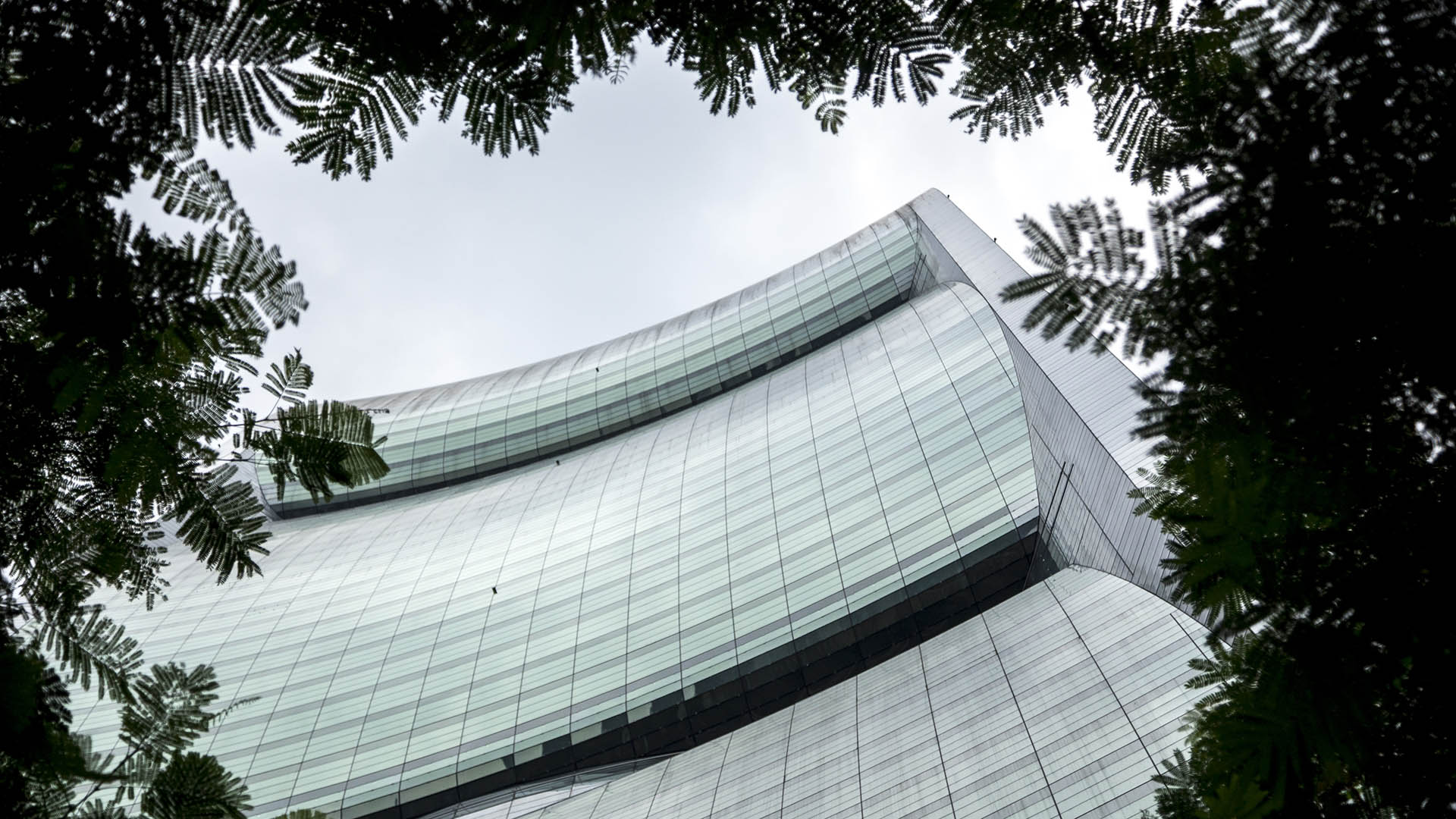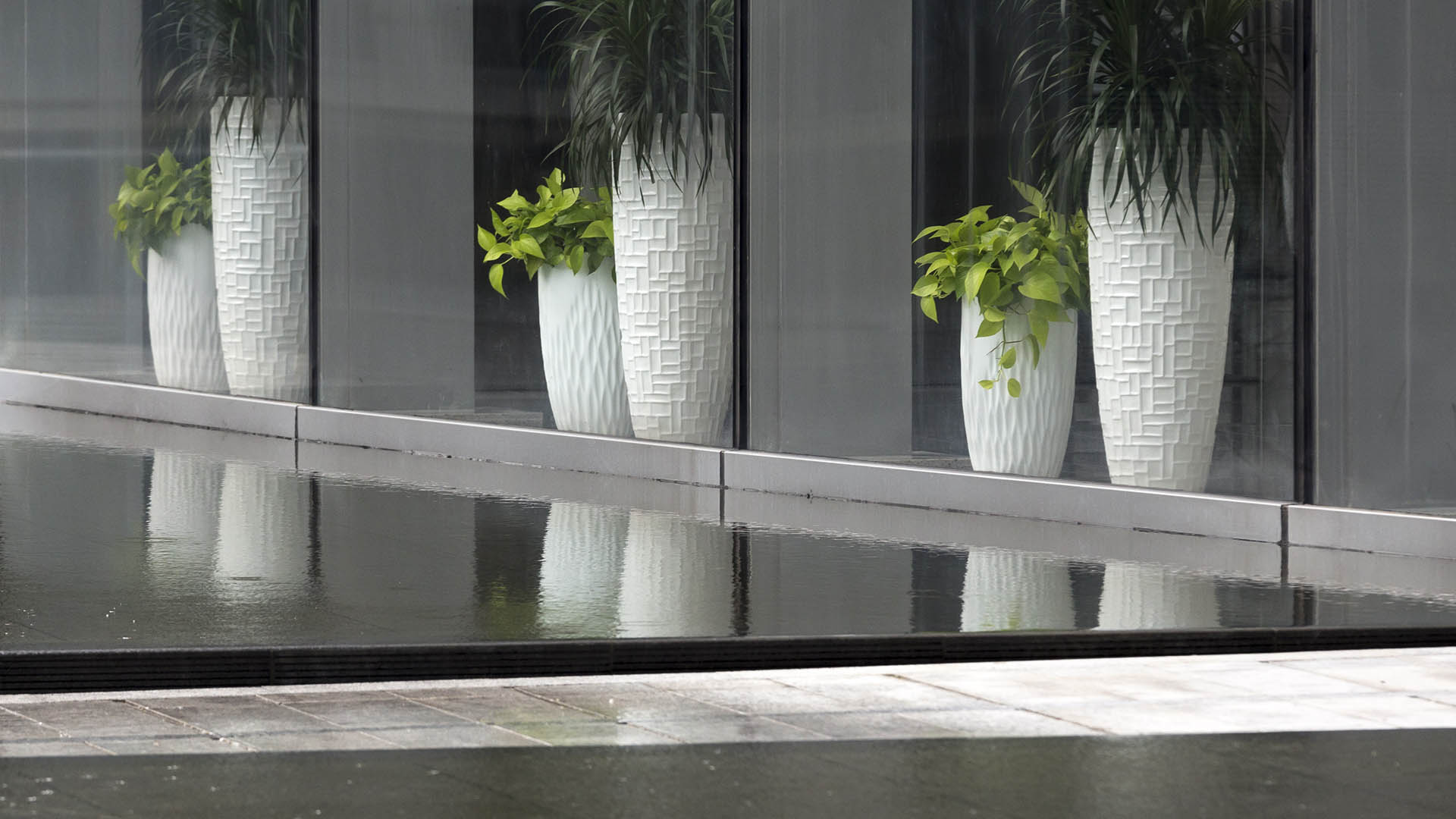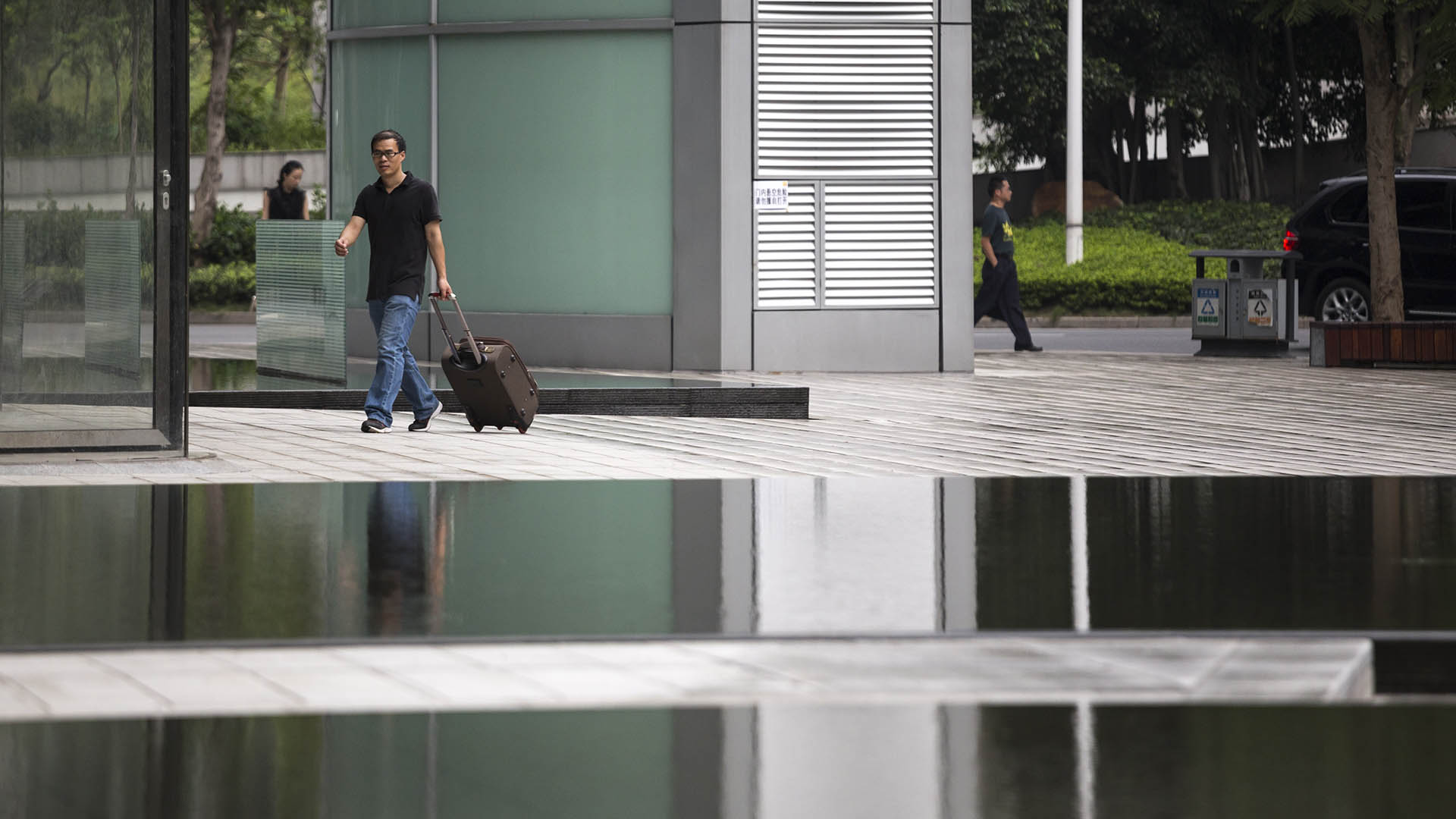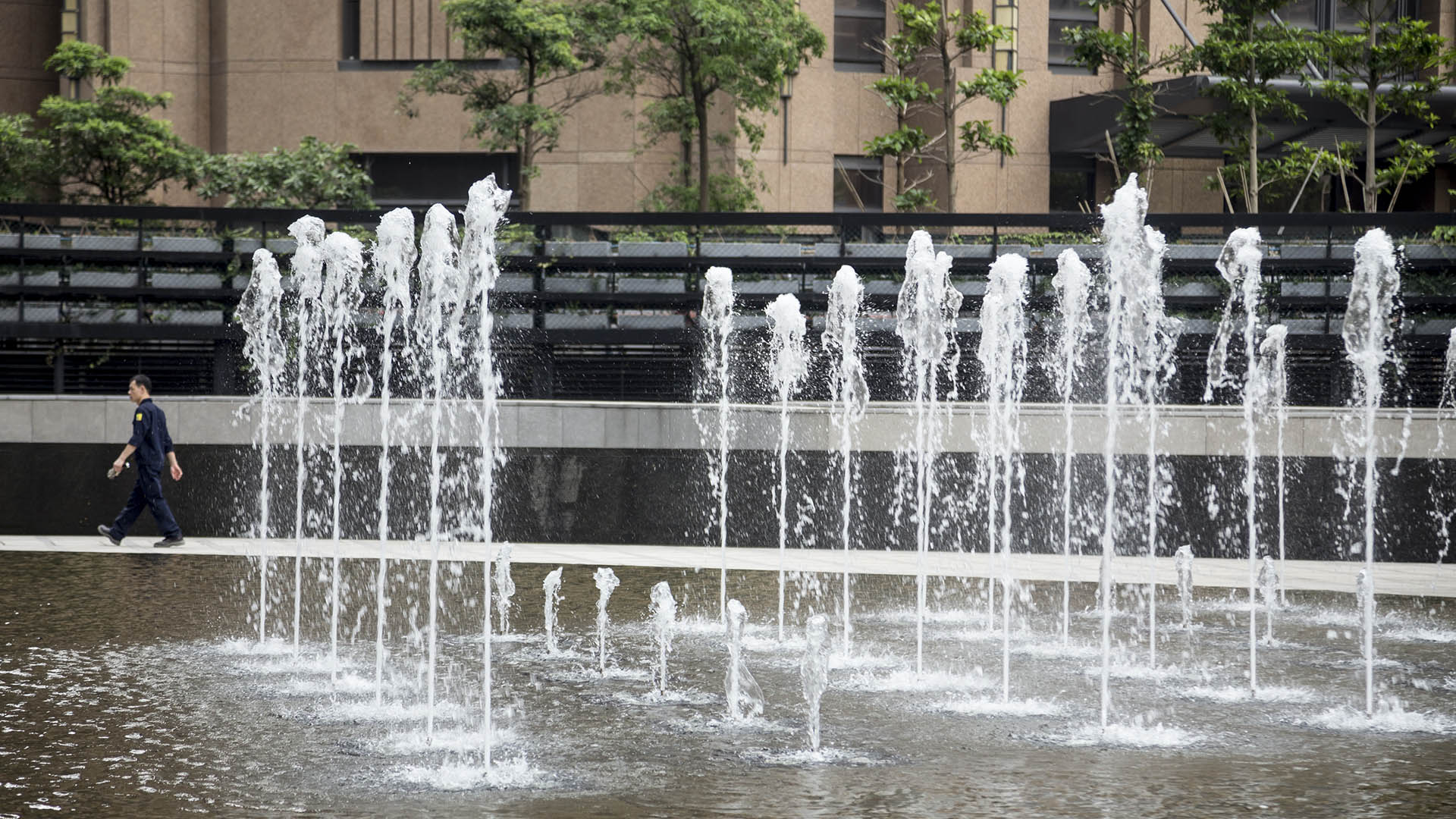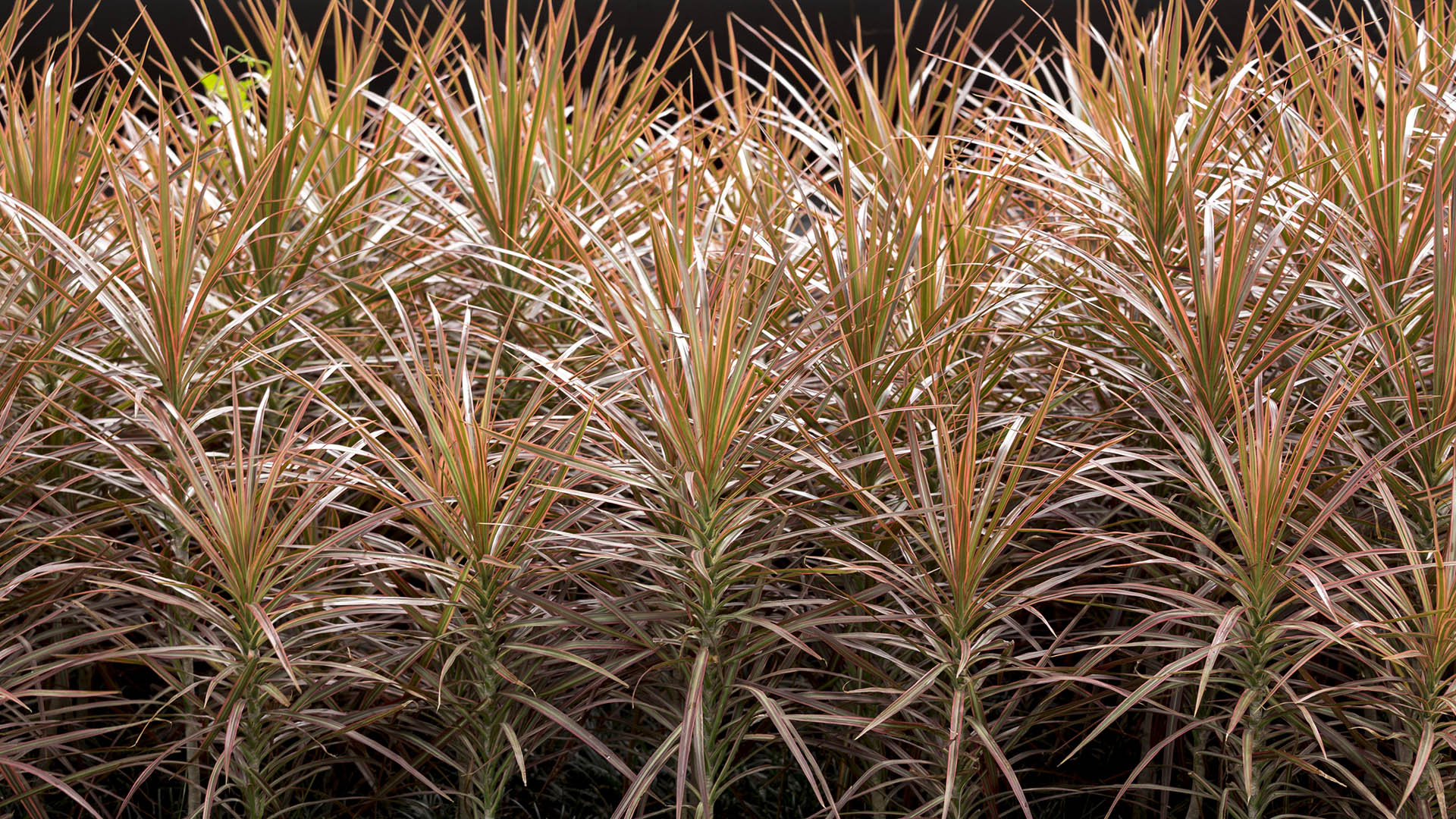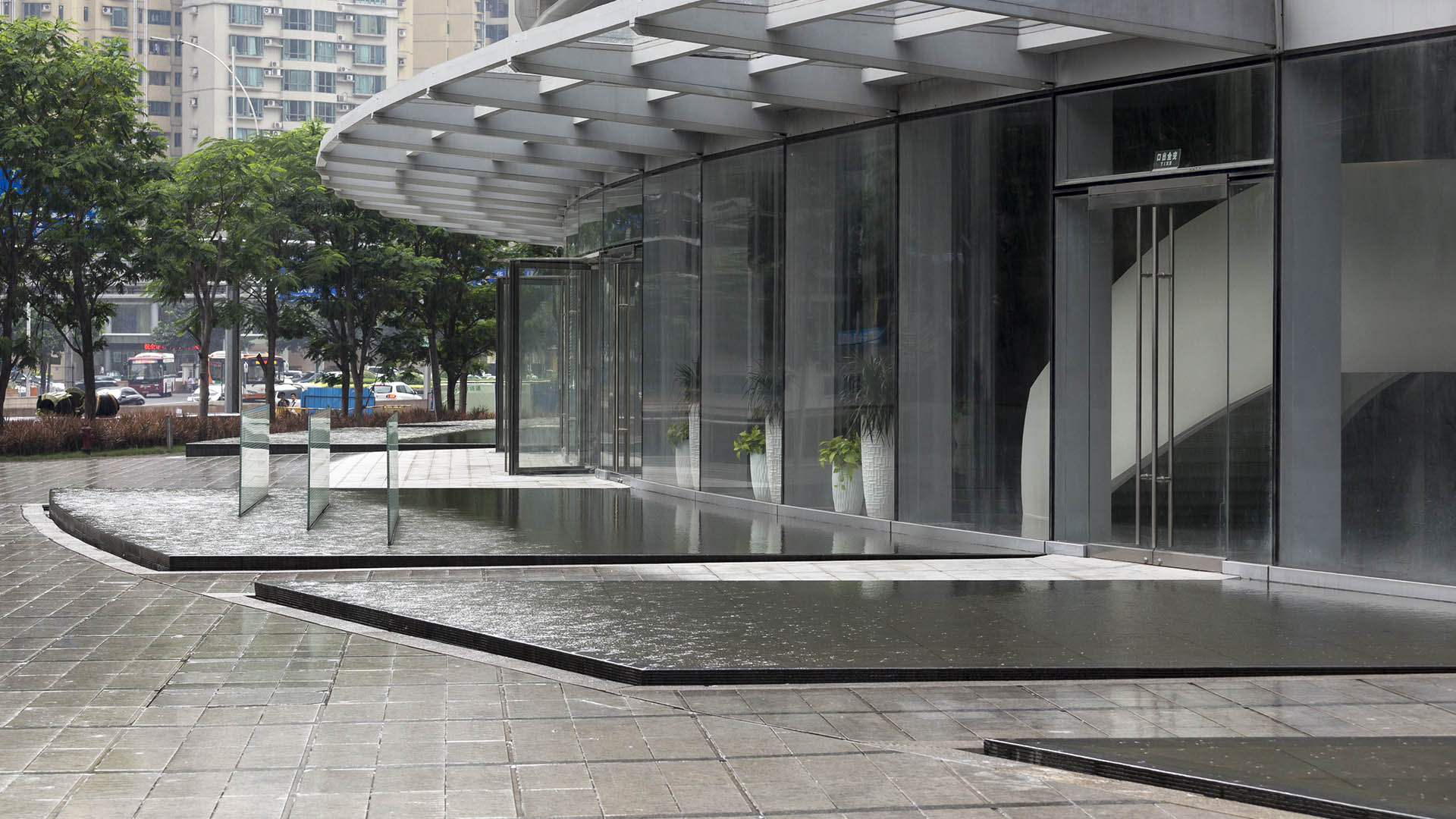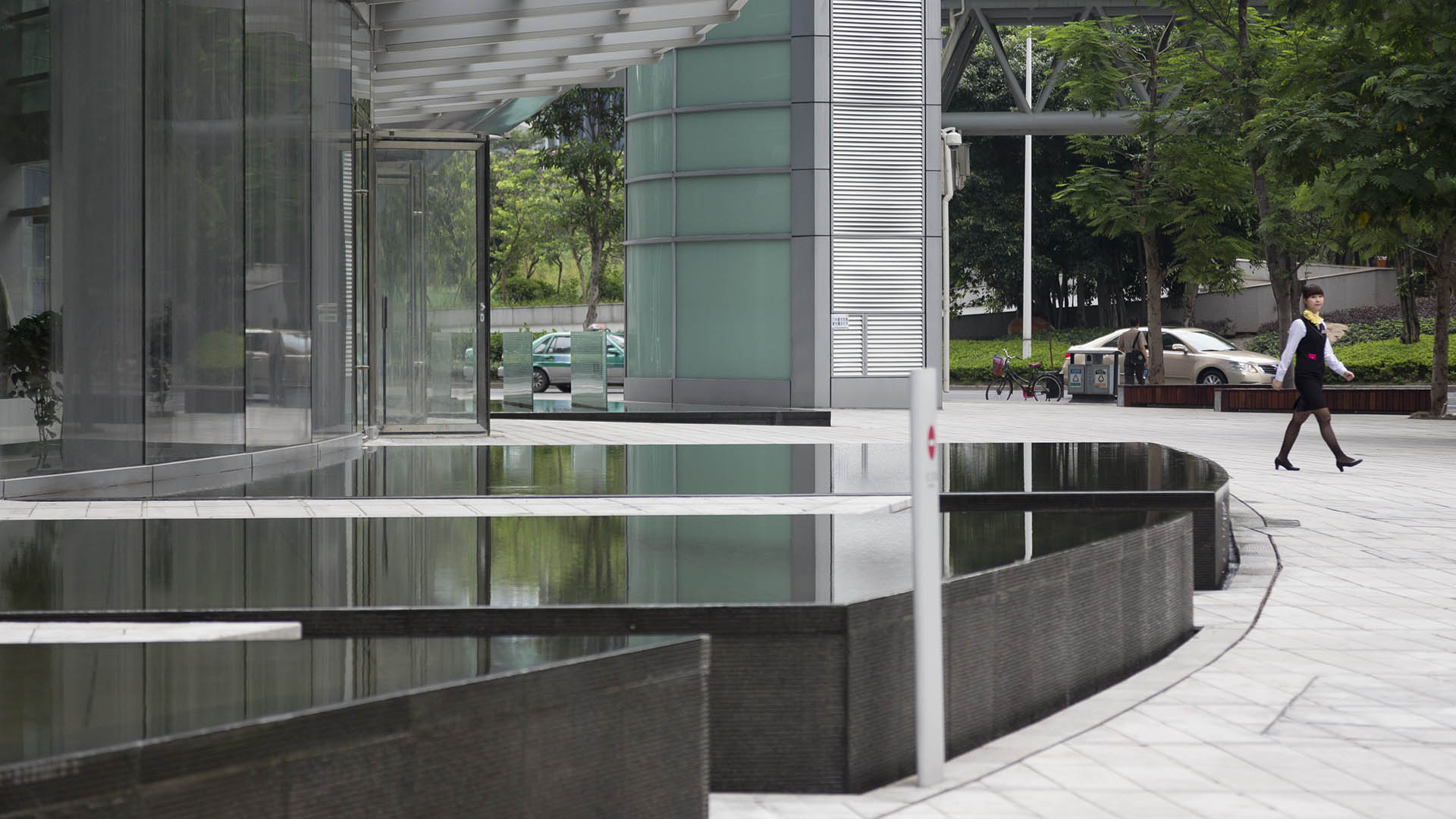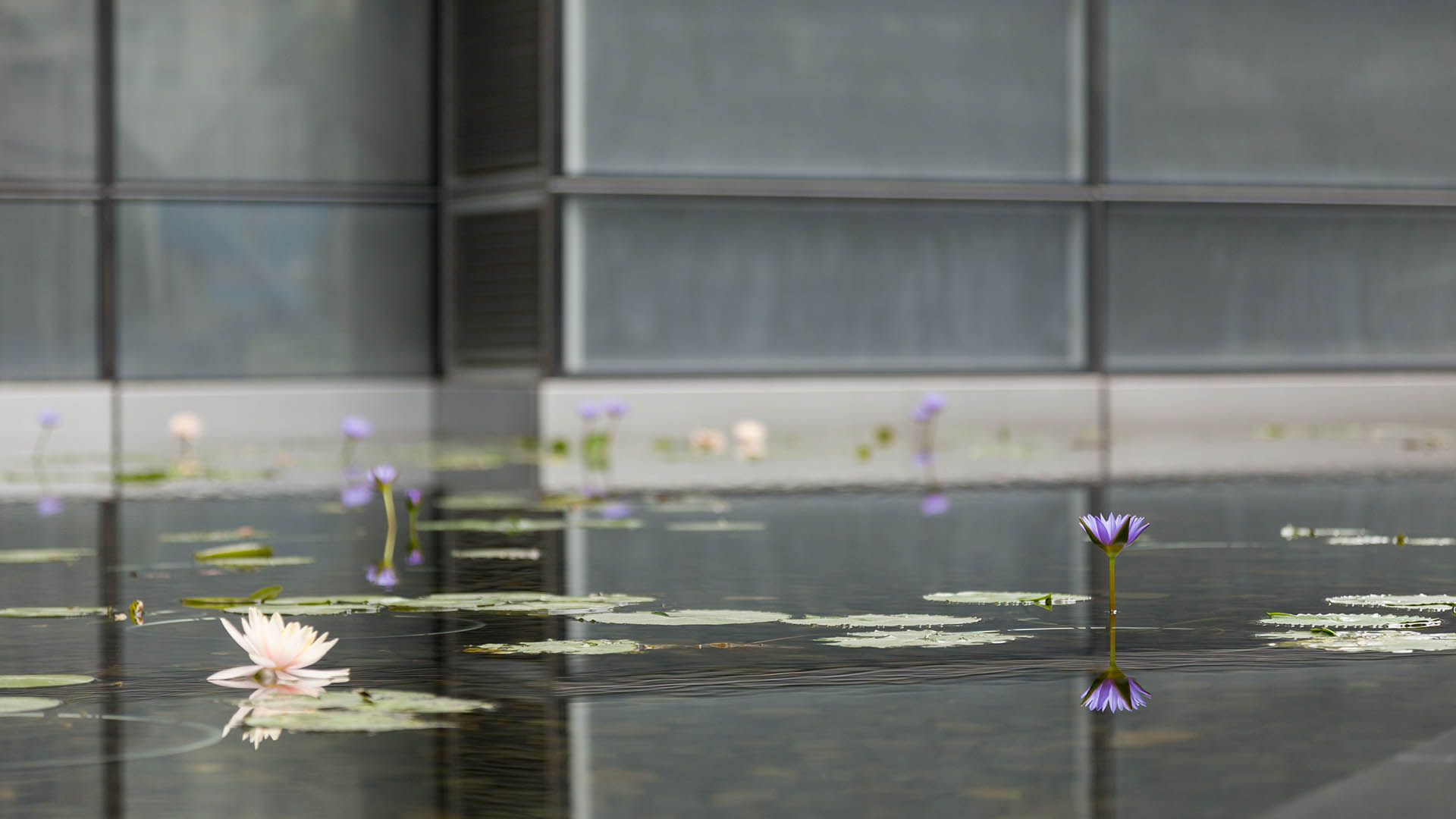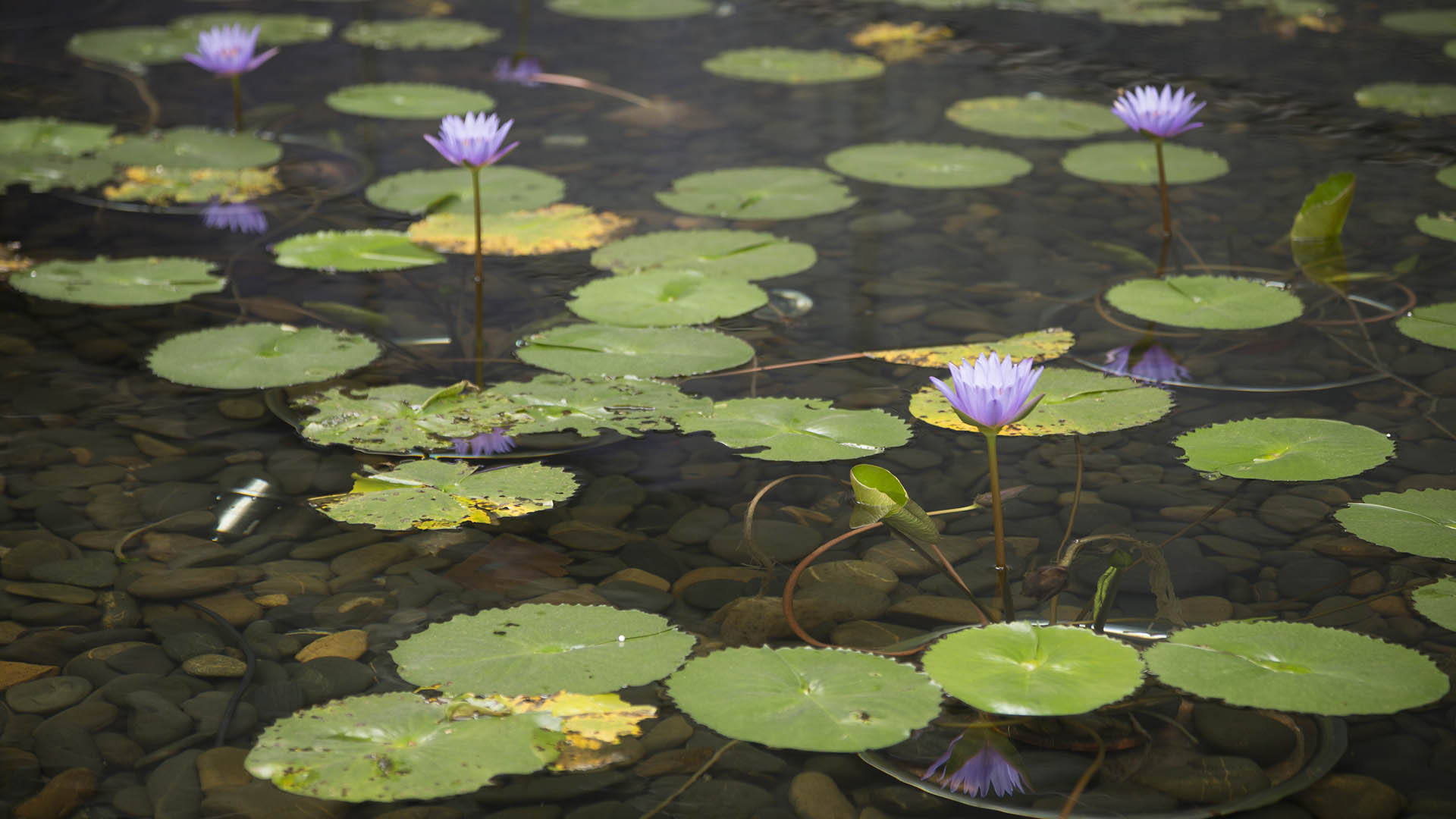Pearl River’s 70-story tower reaches a maximum height of 309.4 meters and is an exemplar of self-sustaining, high-performance, environmentally intelligent architecture. The project’s landscape design reinforces the principles of sustainability and zero-energy usage accomplished by the building’s siting, architecture, and engineering. It creates a variety of attractive outdoor spaces that incorporate functional requirements, establishes important public gathering places, and connects the project to Guangzhou’s larger pedestrian and open space framework. The building’s diagonal orientation creates two major open areas, one facing south and one facing north. The south-facing exterior space serves as a formal ceremonial plaza, scaled for large public gatherings and protected from traffic along Jinsui Road and West Zhujiang Boulevard. Along the street edges, a canopy of large shade trees provides natural cooling and gathering places, with benches provided in shaded areas. A linear planted “ribbon” along Jinsui Road intercepts the majority of drainage from the buildings and creates an additional place of refuge under the trees.
The northern outdoor space is more park-like, orienting to the smaller park spaces and pedestrian connections within and outside the project. The landscape design unifies the various functional requirements of the building’s north area, including security checkpoints and drop-offs for visitors and employees, garage access, and service. Groves of flowering magnolias establish a strong unifying element along the northern perimeter. A major east-west fountain/water element, bordered by an allee of columnar trees, provides orientation for pedestrians and motorists. Under the Conference Center, a sculptural stone mound contrasts and accentuates the fluid lines of this unique and public-oriented building. In addition to the south plaza and north park areas, the landscape design also includes ponds at the east and west ends of the tower. These will serve both as storage basins for water cooling and as landscape features enhanced with plantings of water lilies and papyrus. These landscape elements combine to reinforce the project’s ambitious program of sustainability, function, and beauty.
Downtown Summerlin
Downtown Summerlin is a 109-acre, high-end retail and entertainment lifestyle center forming the heart of a 22,500-acre master-planned community in the western suburbs of Las Vegas. The landscape design emphasizes the need for comfort and shade while drawing upon the natural desert environment as a visual source for materials, colors, and textures. By distilli...
Monet Avenue 2.0 at Victoria Gardens
A decade after completing Victoria Gardens, the owner looked to refresh the project to maintain its relevancy. SWA redesigned a three-block streetscape and plaza along Monet Avenue. The focus is on the next generation of users, with a shopping environment that highlights the social landscape and blurs the lines between retail and recreation. The design scope i...
Rodeo 39
As larger big-box companies continue to close their brick-and-mortar stores, each leaves behind a sizable void within the communities these centers once served. Rodeo 39, seeks to break the models of traditional retail that are founded on convenience and visibility and shift the focus to community aspirations and user experience.
The 31,000-square-foot ...
Santana Row
SWA provided full landscape architectural services for the development of a neo-traditional town center near downtown San Jose. The client’s vision called for a variety of design styles to create a town center with an impression of growth over time. This theme is expressed in building elevations as well as landscape design. The restaurants and boutique r...




